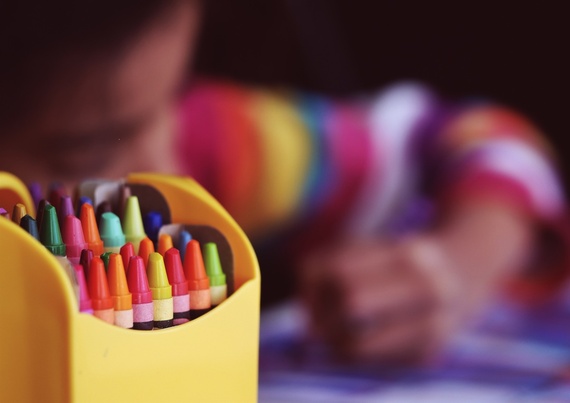Do girls have to wear pink princess dresses? Can boys dress up as Elsa? Is there another way to read storybooks?
These are a few of the exploratory questions that norm-challenging parenting tries to encourage. Lina Bodestad, psychologist and mother shares three reasons why challenging well-established norms makes for curious, more open-minded and more informed kids.
Being a parent in today's society means being subjected to numerous norms and expectations of how children should be raised. What is considered "normal" and what is not. Norms are sometimes very useful, but there is also a risk that norms make people - children as well as adults - feel constrained. We may feel that we don't fit in or belong to the norm. It's not comfortable to us. Norm challenging is about becoming aware of, and questioning, these norms, and instead opening up and making way for new opportunities and new ways of looking at things.
When we offer children many different options and alternatives in playing and learning, we promote a healthy mental and emotional development and strengthen their self-esteem.
Have you ever caught yourself saying this to your daughter: "You can't play with that, honey, that's for boys." Or admonishing your son that "only girls would choose this color."
It's reactions like these that can limit children when it comes to discovering and experiencing the world. "By saying that some toys, movies or books are 'just for girls' or 'just for boys', the range of possible options for each child becomes smaller," says psychologist Lina Bodestad in her free norm-challenging parenting course.
"This can have an impact on their play - but also, by extension, on which roles they dare to explore and try on. If a boy notices that it is not expected of him to play with dolls and explore family oriented roles, he will soon stop doing this and instead choose more commonly accepted games and roles."
Swedish authors Kristina Henkel and Marie Tomičic suggest some alternatives in their book Show Your Child 100 Possibilities Instead of Two (coming soon in English). Move the toys around in your child's room and put them in new places. Let the Batman action figures move into the toy kitchen. Encourage children to imagine the with dolls and action figures trying on different roles and tasks when playing. Spiderman can "play house" and Barbie can be the superhero. When participating in your child's play, try switching and replacing gender pronouns and see what happens; for example, refer to the teddy bear as she if it's usually called he.
2. Be a role model of expressing emotions in a healthy way ("Boys don't cry")
Boys are expected to be brave, active, courageous and express emotions perceived as strong. Girls, on the other hand, are expected to be calm, understanding, nurturing, and express "calmer" feelings, such sadness. A boy who cries, or a girl who gets explosively angry, may both get reactions from others around them indicating that their behavior is not okay. That is to say, it's not the norm.
In this case, adults play an important part as role models. We need to muster the courage to show and express our whole range of emotions, regardless of our gender, in front of our children or other children around us. Express, and stand up for, the fact that everyone gets sad, angry, happy, surprised, annoyed or confused sometimes. All emotions are okay, as long as you express them without harming yourself or others.
3. Reframe the classics ("So the princess slays the dragon and saves the day")
Next time you're reading a fairytale, think about how it affects children to repeatedly read about male figures who are capable and courageous heroes, while the female characters are weak, helpless and need to be "saved".
"Books and reading are the keys to language, but they also provide us with role models and norms about what is desirable and expected of people, and what is not," says Bodestad. "The wider the repertoire of characters depicted in the books you and your child read together, the more opportunities and options become accessible to your child in their imagination and play."
You don't have to fill their bookshelves with new "gender-approved" books. Instead, simply try reading the ones you already have from a slightly different perspective. Have fun, experiment and feel free to change, modify, add and subtract. See what happens to the stories.
Next time you read a book together with your child, try replacing "he" with "she" and vice versa, or replace all gender pronouns with "they". Discuss with your child - what happens to the story? How does your child feel about the "hero" being a girl? Can the child identify with the different characters in new ways?
You can find out more ways in which Norm-Challenging parenting can help your child develop in this free course by psychologist Lina Bodestad.
